This article needs additional citations for verification .(May 2007) |
| History of Slovakia |
|---|
 |
The area today known as Slovakia has been inhabited throughout the prehistoric period.
This article needs additional citations for verification .(May 2007) |
| History of Slovakia |
|---|
 |
The area today known as Slovakia has been inhabited throughout the prehistoric period.

Radiocarbon dating puts the oldest surviving archaeological artifacts from Slovakia—found near Nové Mesto nad Váhom—at 270,000 BCE, in the Early Paleolithic era. These ancient tools, made by the Clactonian technique, bear witness to the ancient habitation of Slovakia.
Other stone tools from the Middle Paleolithic era (200,000–80,000 BCE) come from the Prepost cave (Prepoštská jaskyňa) near Bojnice and from other nearby sites. The most important discovery from that era is a Neanderthal cranium (c. 200,000 BCE), discovered near Gánovce, a village in northern Slovakia.
Archaeologists have found prehistoric Homo sapiens skeletons in the region, as well as numerous objects and vestiges of the Gravettian culture, principally in the river valleys of Nitra, Hron, Ipeľ, Váh and as far as the city of Žilina, and near the foot of the Vihorlat, Inovec, and Tribeč mountains, as well as in the Myjava Mountains. The most well-known finds include the oldest female statue made of mammoth-bone (22,800 BCE), the famous Venus of Moravany. The figurine was found in the 1940s in Moravany nad Váhom near Piešťany. Numerous necklaces made of shells from Cypraca thermophile gastropods of the Tertiary period have come from the sites of Moravany-Žákovská, Podkovice, Hubina and Radošina. These findings provide the most ancient evidence of commercial exchanges carried out between the Mediterranean and Central Europe.
Discovery of tools and pottery in several archaeological digs and burial places scattered across Slovakia, surprisingly including northern regions at relatively high altitudes, gives evidence of human habitation in the Neolithic period. The pottery found in Želiezovce, Gemer, and the Bukové hory massif is characterized by remarkable modeling and delicate linear decoration. It also reveals the first attempts at coloring. This deliberate adornment shows a developed aesthetic sense of the Neolithic craftsmen.
Important archaeological discoveries have been made in several formerly-inhabited caves. For example, humans inhabited the famous Domica cave, almost 6000 meters long, to a depth of 700 meters. This cave offers one of the biggest Neolithic deposits in Europe. The tribes who created the pottery from the Massif Bukové hory inhabited Domica continuously for more than 800 years.
The transition to the Neolithic era in Central Europe featured the development of agriculture and the clearing of pastures, the first smelting of metals at the local level, the "Retz" style pottery and also fluted pottery. During the "fluted-pottery" era, people built several fortified sites. Some vestiges of these remain today, especially in high-altitude areas. Pits surround the most well-known of these sites at Nitriansky Hrádok. Starting in the Neolithic era, the geographic location of present-day Slovakia hosted a dense trade-network for goods such as shells, amber, jewels and weapons. As a result, it became an important hub in the system of European trade routes.
The Bronze Age on the territory of Slovakia went through three stages of development, stretching from 2000 to 800 BCE. Major cultural, economic, and political development can be attributed to the significant growth in production of copper, especially in central Slovakia (for example in Špania Dolina) and north-west Slovakia. Copper became a stable source of prosperity for the local population. In the Early Bronze Age the Unetice culture established important centres in western Slovakia such as the large fortified settlement of Fidvár, which was involved in the mining of nearby gold and tin deposits. Eastern Slovakia was dominated by the contemporary Ottomány culture. These cultures were succeeded by the Middle Bronze Age Mad'arovce and Tumulus cultures, followed by the Late Bronze Age Čaka, Velatice and Piliny cultures, which were part of the broader Urnfield culture. Following their disappearance, the Lusatian culture expanded, building strong and complex fortifications with large permanent buildings and administrative centres. Excavations of Lusatian hill forts document the substantial development of trade and agriculture in that period.
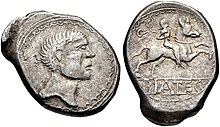
In the Early Iron Age the richness and the diversity of tombs increased considerably with the development of the Hallstatt culture. The inhabitants of the area manufactured arms, shields, jewelry, dishes, and statues. The arrival of tribes from Thrace disrupted the people of the Calenderberg culture, who lived in the hamlets located on the plain (Sereď), and also in the hill forts located on the summits (Smolenice, Molpí). The local power of the Hallstatt "Princes" disappeared in Slovakia during the last period of the Iron Age after strife between the Scytho-Thracian people and Celtic tribes who advanced from the south towards the north, following the Slovak rivers.
The victory of the Celts marked the beginning of the late Iron Age in the region. Two major Celtic tribes living in Slovakia were Cotini and Boii. Cotini were probably identical or made significant part of so-called Púchov culture. The Celts built large oppida in Bratislava and Liptov (the Havránok shrine). Silver coins with the names of Celtic kings, the so-called Biatecs, represent the first known use of writing in Slovakia. Celtic dominance disappeared with the Germanic incursions, the victory of Dacia over the Boii near the Neusiedler See, and the expansion of the Roman Empire.
The Roman epoch began in Slovakia in 6 CE, inaugurated by the arrival of Roman legions on this territory that led to a war against the Marcomanni and Quadi tribes. The Kingdom of Vannius, a barbarian kingdom founded by the Quadi, existed in western and central Slovakia from 20 to 50 AD. The Romans and their armies occupied only a thin strip of the right bank of the Danube and a very small part of south-western Slovakia (Celemantia, Gerulata, Devín Castle).
Only in 174 CE did the emperor Marcus Aurelius penetrate deeper into the river valleys of Váh, Nitra and Hron. On the banks of the Hron he wrote his philosophical work Meditations . In 179 CE, a Roman legion engraved on the rock of the Trenčín Castle the ancient name of Trenčín (Laugaritio), marking the furthest northern point of their presence in this part of Europe. [4]
In the 2nd and 3rd centuries CE the Huns began to leave the Central Asian steppes. They crossed the Danube in 377 CE and occupied Pannonia, which they used for 75 years as their base for launching looting-raids into Western Europe. In 451, under the command of Attila, they crossed the Rhine and laid Gaul to waste; then crossed even the Pyrenees, devastating the countryside of Catalonia. However, Attila's death in 453 brought about the collapse of the Hunnic Empire (and eventual disappearance of the Huns as a people).
After the Huns in the 5–6th century German tribes such as the Ostrogoths, Lombards, Gepids and Heruli, began to settle in the Pannonian Basin. Their reign and rivalry determined the events during the first two-thirds of the 6th century. In the 6th century, an early Lombard state was centered in the territory of present-day Slovakia. [5] Subsequently, the Lombards left from this area and moved first to Pannonia and then to Italy, where their statehood was continued until the 11th century.
In 568 a nomadic tribe, the Avars, conducted their own invasion into the Middle Danube region. The Avars occupied the lowlands of the Pannonian Plain, established an empire dominating the Pannonian Basin and they made several raids against the Byzantine Empire whose emperors sent gifts regularly to them in order to avoid their attacks. [6] In 623, the Slavic population living in the western parts of Pannonia seceded from their empire. [7] In 626, the Avars and the Persians jointly besieged but failed to capture Constantinople; following this failure, the Avars' prestige and power declined and they lost the control over their former territories outside the Pannonian Basin but their reign has lasted to 804. [6]

The Quadi were a Germanic people who lived approximately in the area of modern Moravia in the time of the Roman Empire. The only surviving contemporary reports about the Germanic tribe are those of the Romans, whose empire had its border on the River Danube just to the south of the Quadi. They associated the Quadi with their neighbours the Marcomanni, and described both groups as having entered the region after the Celtic Boii had left it deserted. The Quadi may later have contributed to the "Suebian" group who crossed the Rhine with the Vandals and Alans in the 406 Crossing of the Rhine, and later founded a kingdom in northwestern Iberia.

The Urnfield culture was a late Bronze Age culture of Central Europe, often divided into several local cultures within a broader Urnfield tradition. The name comes from the custom of cremating the dead and placing their ashes in urns, which were then buried in fields. The first usage of the name occurred in publications over grave sites in southern Germany in the late 19th century. Over much of Europe, the Urnfield culture followed the Tumulus culture and was succeeded by the Hallstatt culture. Some linguists and archaeologists have associated this culture with the pre-Celtic language, or a Proto-Celtic language family.

The area known as Croatia today has been inhabited throughout the prehistoric period, ever since the Stone Age, up to the Migrations Period and the arrival of the White Croats.

The early history of Switzerland begins with the earliest settlements up to the beginning of Habsburg rule, which in 1291 gave rise to the independence movement in the central cantons of Uri, Schwyz, and Unterwalden and the growth of the Old Swiss Confederacy during the Late Middle Ages.
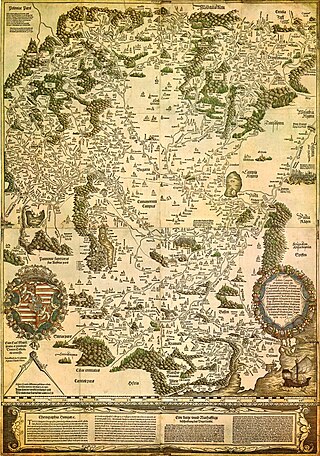
The history of Hungarybefore the Hungarian conquest spans the time period before the Hungarian conquest in the 9th century of the territories that would become the Principality of Hungary and the Kingdom of Hungary.

The Pannonian Basin, or Carpathian Basin, is a large sedimentary basin situated in south-east Central Europe. The geomorphological term Pannonian Plain is more widely used for roughly the same region though with a somewhat different sense, with only the lowlands, the plain that remained when the Pliocene Epoch Pannonian Sea dried out.

The Great Hungarian Plain is a plain occupying the majority of the modern territory of Hungary. It is the largest part of the wider Pannonian Plain.. Its territory significantly shrank due to its eastern and southern boundaries being adjusted by the new political borders created after World War I when the Treaty of Trianon was signed in 1920.

The prehistory and protohistory of Poland can be traced from the first appearance of Homo species on the territory of modern-day Poland, to the establishment of the Polish state in the 10th century AD, a span of roughly 500,000 years.

Transdanubia is a traditional region of Hungary. It is also referred to as Hungarian Pannonia, or Pannonian Hungary.

Within the boundaries of today's Bosnia and Herzegovina, there have been many layers of prehistoric cultures whose creation and disappearance are linked to migrations of unidentified ethnic groups.

Prehistoric France is the period in the human occupation of the geographical area covered by present-day France which extended through prehistory and ended in the Iron Age with the Roman conquest, when the territory enters the domain of written history.

Prehistoric Korea is the era of human existence in the Korean Peninsula for which written records do not exist. It nonetheless constitutes the greatest segment of the Korean past and is the major object of study in the disciplines of archaeology, geology, and palaeontology.
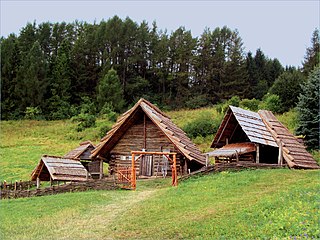
Havránok is an important archaeological site in northern Slovakia. It is on a hill above the Liptovská Mara water reservoir around 2 km (1.2 mi) from the village of Bobrovník, about halfway between Ružomberok and Liptovský Mikuláš in the Liptov region. The archaeologists unearthed a prehistoric Celtic hill fort and a medieval wooden castle in the 1960s, during the construction of the Liptovská Mara dam. Both objects have been partially reconstructed. During the Iron Age and the Roman Era, the shrine of Havránok was an important religious center of the Celts living in Slovakia.

Prehistory in the Iberian peninsula begins with the arrival of the first Homo genus representatives from Africa, which may range from c. 1.5 million years (Ma) ago to c. 1.25 Ma ago, depending on the dating technique employed, so it is set at c. 1.3 Ma ago for convenience. The end of Iberian prehistory coincides with the first entrance of the Roman army into the peninsula, in 218 before Christ (BC), which led to the progressive dissolution of pre-Roman peoples in Roman culture. This end date is also conventional, since pre-Roman writing systems can be traced to as early as 5th century BC.
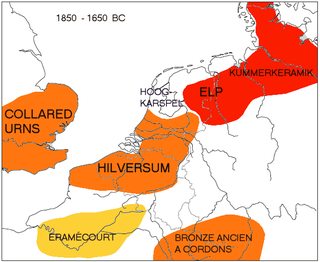
The Elp culture is a Bronze Age archaeological culture of the Netherlands having earthenware pottery of low quality known as "Kümmerkeramik" as a marker. The initial phase is characterized by tumuli, strongly tied to contemporary tumuli in Northern Germany and Scandinavia, and apparently related to the Tumulus culture in Central Europe. This phase was followed by a subsequent change featuring Urnfield (cremation) burial customs.
Celticisation, or Celticization, was historically the process of conquering and assimilating by the ancient Celts, or via cultural exchange driven by proximity and trade. Today, as the Celtic inhabited-areas significantly differ, the term still refers to making something Celtic, usually focusing around the Celtic nations and their languages.
Pannonian Latin was a variant of Classical and Late Latin that developed in Pannonia, but became extinct after the loss of the province.
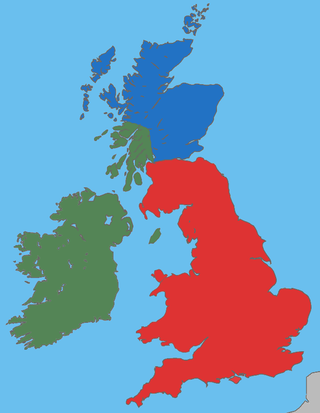
The Insular Celts were speakers of the Insular Celtic languages in the British Isles and Brittany. The term is mostly used for the Celtic peoples of the isles up until the early Middle Ages, covering the British–Irish Iron Age, Roman Britain and Sub-Roman Britain. They included the Celtic Britons, the Picts, and the Gaels.

Slovakia was partly occupied by Roman legions for a short period of time. Marcomannia was a proposed province of the Roman Empire that Emperor Marcus Aurelius planned to establish in this territory. It was inhabited by the Germanic tribes of Marcomanni and Quadi, and lay in the western parts of the modern states and Slovakia and the Czech Republic (Moravia). Part of the area was occupied by the Romans under Marcus Aurelius between 174 AD and 180 AD. His successors abandoned the project, but the people of the area became steadily Romanized during the next two centuries. The Roman influence was disrupted with the invasions of Attila starting around 434 AD and as Slavic people later began to move into the area.

The Gotini, who are generally equated to the Cotini in other sources, were a Gaulish tribe living during Roman times in the mountains approximately near the modern borders of the Czech Republic, Poland, and Slovakia.